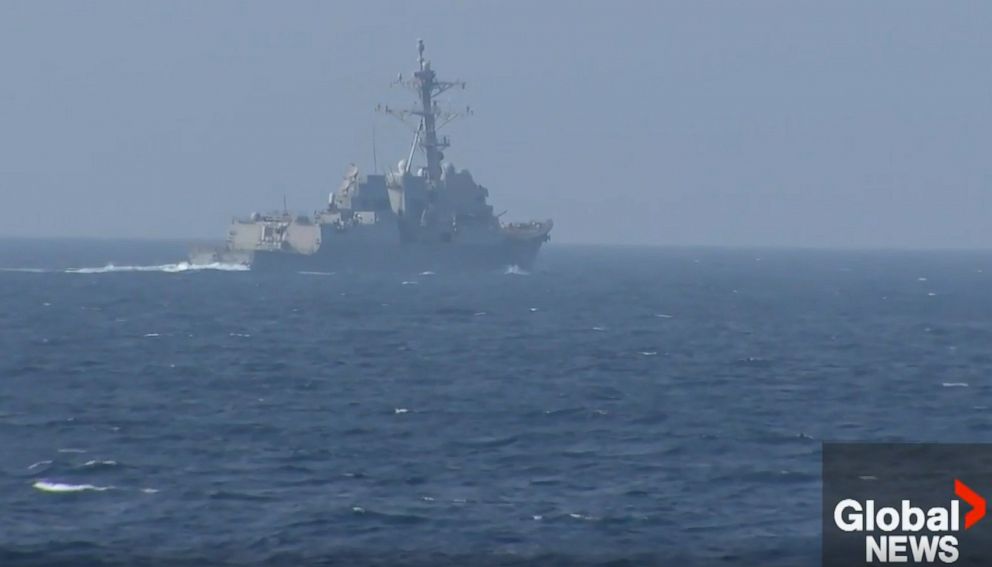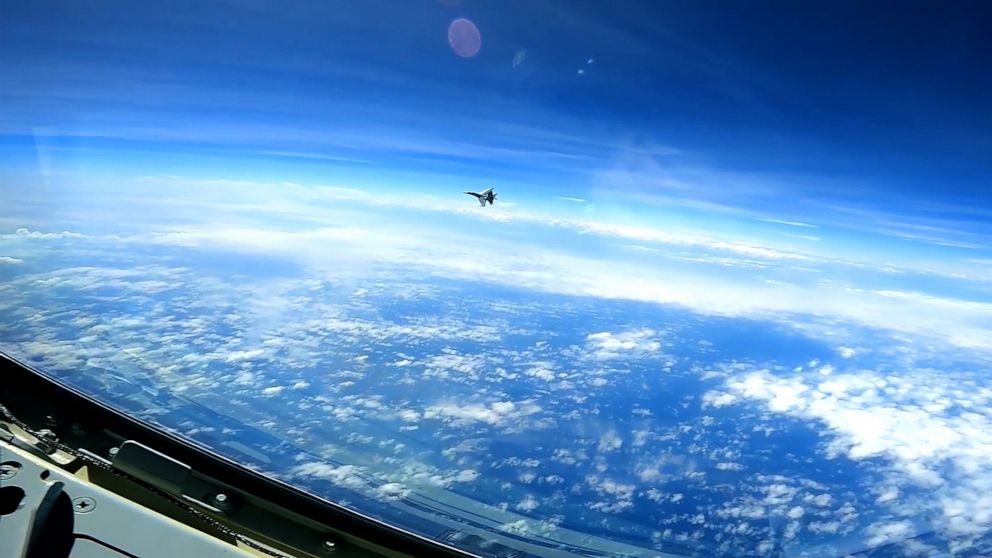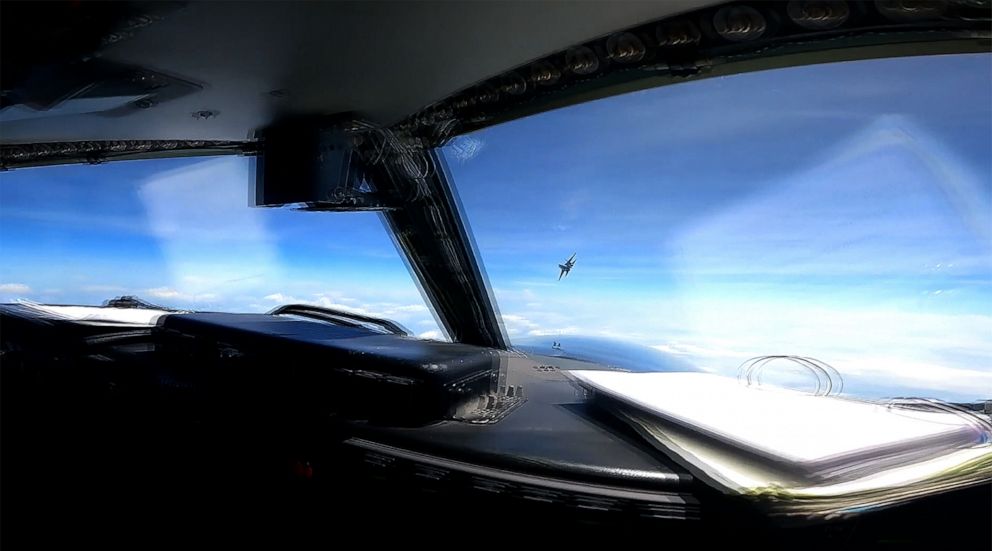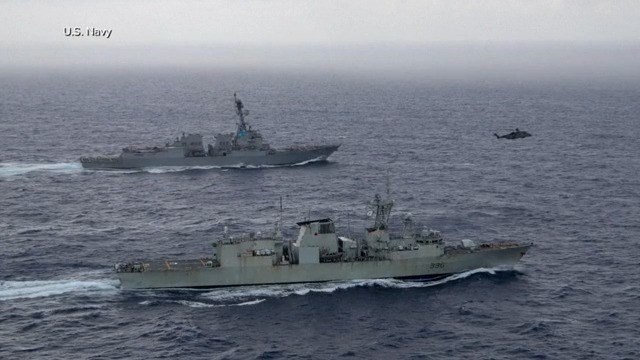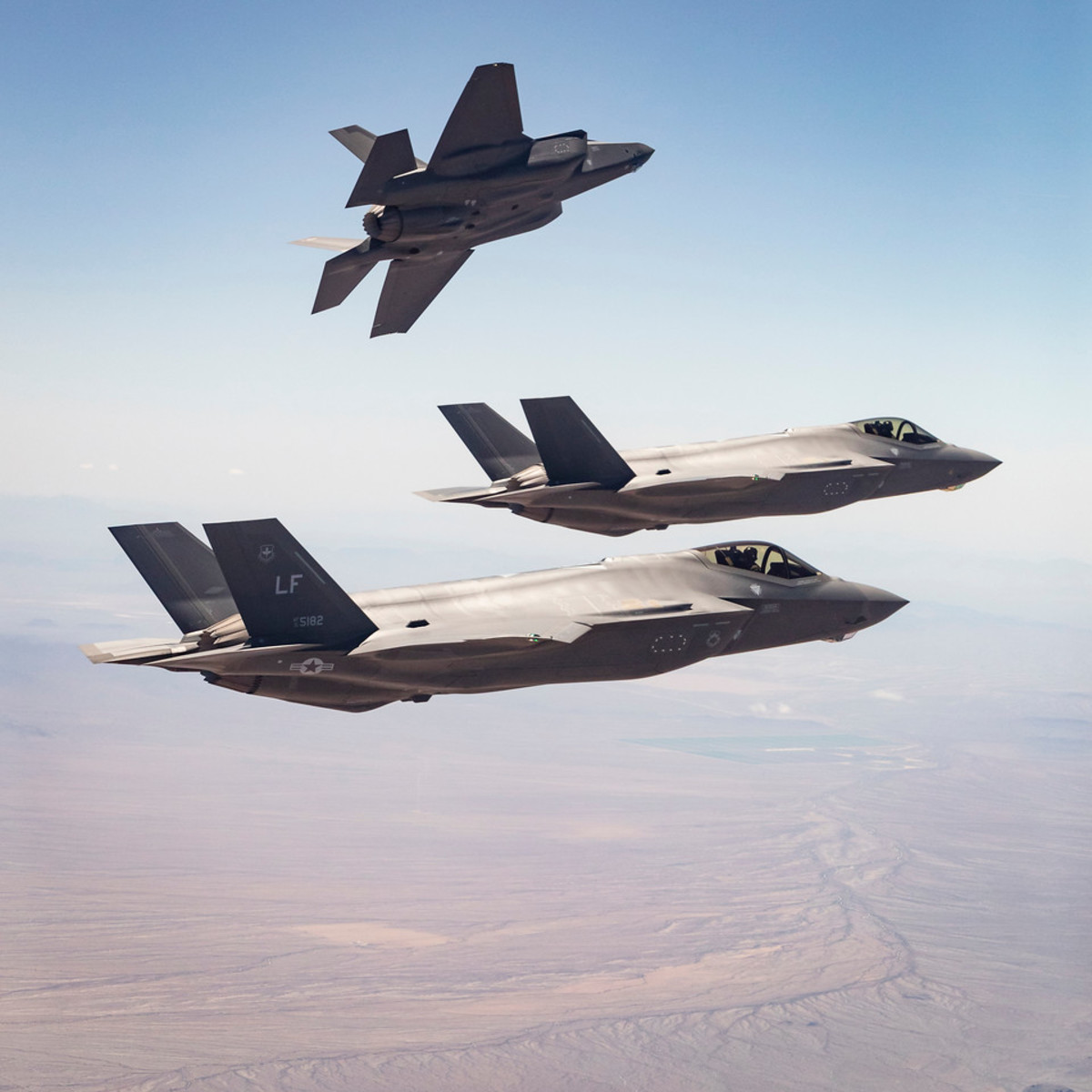America can defeat China and win the future if we do this one thing. US is being outpaced in strategic technological development and we could lose our edge.

www.foxnews.com
It's getting closer to crunch time, China is seeing its opportune moment and getting ready to clash with the US over Taiwan:-
https://warriormaven.com/china/china-j20-us-f35
 Lockheed Martin
Lockheed Martin
Is China's Stealthy J-20 Superior to the US F-35 and F-22?
A Chinese paper claims its 5th-generation J-20 aircraft is superior to the F-35.
Video Above: A Warrior Maven exclusive interview with US Air Force Maj. Gen. & Commander of the Air Force Research Lab, Heather Pringle
By Kris Osborn - Warrior Maven
Earlier this year, a Chinese paper claimed that its 5th-generation stealthy J-20 aircraft is superior to the US F-35, based on comments from an Air Force general following an incident in which US-35s had “close contact” with the Chinese fighter over the East China Sea.
J-20 vs. F-35
The Chinese government-backed
Global Times newspaper describes an incident wherein the
J-20 and
F-35 flew in close proximity to one another as part of routine People’s Liberation Army exercises in the region.
The paper quotes comments from Air Force Gen. Kenneth Wilsbach, Commander of US Pacific Air Forces, saying the US pilots were “impressed” with the J-20. The US general’s quote reportedly came from an online event broadcast on youtube, the paper says.
“We got relatively close to the
J-20s along with our
F-35s in the East China Sea, and we’re relatively impressed with the command and control that was associated with the J-20,” Wilsbach reportedly said, according to the Chinese paper.
Wilsbach also reportedly said the Chinese pilots were “flying the
J-20s pretty well,” according to the paper.
However, when placed in a more complete context, Wilsbach’s comments are by no means unusual, as senior Air Force and Pentagon leaders often point out the technological abilities of Chinese weapons systems as part of a vital need to ensure continued US modernization.
F-35s
Lockheed Martin
However, this by no means indicates that the Chinese 5th-generation aircraft actually outperforms or even rivals an F-35. Apart from the J-20s visible external configuration, and many Chinese press reports about its improved domestically-built engine and fast-improving performance, there may be little known information about the PLA aircraft’s mission systems, computing, sensors or weapons interfaces.
Clearly its stealth exterior would suggest it may be an
F-35 and F-22 “copycat” in terms of its blended wing-body and rounded fuselage. However, apart from its apparent stealth properties, any true margin of difference between the two aircraft would likely reside in less visible technological variables such as sensor range and fidelity, on board data processing and weapons targeting precision, among other things.
Two J-20 fighters breaking formation
Wikipedia
Should Wilsbach’s comment about the
J-20s command and control be accurate, that does introduce an interesting and rare window of observation into perhaps previously unknown elements of the J-20. If in fact the Chinese aircraft appeared to maneuver with an effective command and control system, that would indicate that perhaps at least some of the J-20s mission systems and computing are effective.
At the same time, it seems important to point out that regardless of potentially being “impressed” with the J-20 and its flying, Wilsbach offered no input or comment regarding the question as to whether he thinks the Chinese 5th-generation aircraft in anyway resembles the
F-35.
Nonetheless, China claims its fifth-generation, stealthy J-20 fighter jet is now taking yet another massive step toward war preparedness by flying in what could be referred to as “full stealth” mode.
A report from the Chinese-government backed Global Times says the J-20 was “spotted” flying without a Luneburg lens, a small device used to intentionally expose a stealth aircraft to others in situations like training or non-combat flights.
Does this mean the aircraft has taken new steps toward combat and operational “readiness?” Furthermore, just how stealthy is it?
J-20 & F-22: Wingspan, Speed & Weapons
The Chinese J-20 certainly appears slightly larger than an F-22 or
F-35 stealth jet fighter, given its dual wing configuration, an engineering method employed to optimize air flow and achieve improved aerodynamic performance. While the wing configurations of a J-20 and F-22 are decidedly different, the J-20 fuselage itself appears to resemble that of an F-22 with two engine exhaust and blended, curved or rounded main body exterior.
What would it mean to truly rival or surpass the F-22 stealth fighter? Now that the J-20 has been flow in full stealth capacity and modified slightly with the integration of a new engine, some might wonder if the Chinese aircraft could achieve any kind of “supercruise” capability that has—so far—been unique to the F-22.
The
F-22 has a forty-four-foot wingspan and is, at certain high altitudes, able to hit speeds as fast as Mach 2.25. Various data spec sheets and articles cite that, by comparison, a J-20 is several meters longer but built with a similar 44-ft wingspan. The articles, in
Air Force Technology and
The National Interest say the J-20 can reach speeds of Mach 2.55. It is unsure if this is confirmed per se and speed metrics don’t necessarily translate into maneuverability or sustained speed.
Video Above: Air War 2050: 5th & 6th Gen Stealth Fighter Attacks to Continue
Regardless of a J-20’s speed, a key F-22 advantage is that it not only can reach supercruise speeds but also sustain them as well without needing afterburners, a major technical enhancement. Also, a slightly shorter, sleeker, and more streamlined fuselage, coupled with potentially unmatched levels of propulsion, thrust, and high-speed maneuverability, could very well give the F-22 a decisive advantage.
The F-22 is also armed with massively upgraded weapons such as the now software-enhanced AIM-120D and AIM-9X air-to-air and air-to-ground or surface weapons. Ultimately, the F-22’s advantage may reside in its often discussed role as an “aerial quarterback,” described by innovators as an ability to exchange real-time, two-way information amid warfare with both fourth- and fifth-generation American and allied warplanes
The Chinese People’s Liberation Army Air Force plans to continually modify the engine of their J-20 5th Gen stealth fighter to the point wherein it can match, rival, or potentially out-perform the U.S. F-22.
J-20 & F-22 Engines
Many U.S. engineers and military leaders maintain that the speed, maneuverability, technological sophistication and performance specs of the F-22 are simply unparalleled, yet many of course are acutely familiar with China’s fast-growing technological sophistication.
A report months ago in the
South China Morning Post quotes an unspecified “military insider” (seems to indicate a Chinese military insider) explaining that the Chinese military will no longer use the Russian AL-31F engine in its J-20 but rather replace it with the WS-10C, a modified version of its domestically-built WS-10 engine.
“It’s impossible for China to rely on the Russian engine, because Russia asked China to purchase more Su-35 fighter jets in exchange for the AL-31F engine deals,” the insider, who requested anonymity, said in the paper. “The key problem is – except for its longer combat range advantage – the radar, navigation system and other electronic components on the Su-35s are inferior to Chinese aircraft like the J-16 strike fighter.”
Interestingly, the modifications to the Chinese WS--10 do not, according to the insider, go far enough.
“The air force (
presumably Chinese) is not happy with the final results, demanding that engine technicians modify it until it meets all standards, for example matching the F119 engine used by the Americans’ F-22 Raptor,” the
South China Sea Morning Post writes.
What would it mean to truly rival or surpass the F-22? Does this indicate that the emerging, or soon to emerge, modified Chinese engine would achieve an F-22-like “supercruise” ability to sustain Mach speeds for long periods of time without afterburners? Does it mean it can vector and maneuver in a manner somewhat analogous to an F-22?
J-20 & F-35 Fuselage
Well that may not be fully known, yet it seems there are a few things that can be observed; the J-20 fuselage, with its double-wing configuration, may be somewhat stealthy, yet it does appear larger and somewhat less maneuverable than a more streamlined F-22 fuselage.
The F-22 has a 44-ft wingspan and is, at certain high altitudes, able to hit speeds as fast as Mach 2.25. Various media reports cite that, by comparison, a J-20 is several meters longer but built with a similar 44-ft wingspan; the reports, from Air Force Technology and
The National Interest say the J-20 can reach speeds of Mach 2.55.
Scroll to Continue
Recommended for You



Not sure if this can be or is confirmed per se, and speed metrics don’t necessarily translate into maneuverability or sustained speed.
A key F-22 advantage is that it not only can reach those speeds but can sustain them as well. Also, a slightly shorter, sleeker, and more streamlined fuselage, coupled with potentially unmatched levels of propulsion, thrust, and high-speed maneuverability, could very well give the F-22 a decisive advantage.
Weapons integration, sensor range, EW, and targeting are perhaps the most defining attributes likely to help distinguish which aircraft, the J-20 or F-22, would prevail in an air-to-air engagement or out-perform the other in combat.
An ability to see, attack, out-maneuver, and destroy an enemy aircraft at further ranges and with more targeting precision and sensor fidelity would likely prove to perhaps be the most decisive factor in any combat engagement.
The F-22’s ongoing 3.2b software upgrade has produced now-operational weapons upgrades to the AIM-120D and
AIM-9X air-fired weapons. The enhancements greatly improve targeting precision, accuracy, guidance systems, and range for the weapons, potentially bringing as-of-yet unseen combat advantages. Some of the enhancements to the
weapons, perhaps of greatest significance, include anti-jamming RF technologies built to adjust frequency to sustain weapon targeting and thwart attempted jamming.
The real question then, is despite China’s known propensity for rapid technological advancements, does the J-20 have any kind of air-to-air thrust and maneuverability, supercruise sustained acceleration, or advanced sensors and weapons systems sufficient to rival an F-22?
J-20 Combat Threat
Regardless of its comparative status related to the F-22, the J-20 presents a wide-array of threats. Could the Chinese J-20 5th generation stealth fighter succeed in destroying crucial U.S. tankers, surveillance planes or airborne command posts?
The interesting question was posed by a London-based analyst cited in an article from
Forbes magazine, raising the idea of whether such a prospect would, in fact, be true. The
Forbes article makes the point that U.S. and allied air assets, at a deficit in terms of actual numbers, would rely heavily upon less stealthy surveillance assets such as an E-2D Hawkeye, Triton maritime drone or KC-46 tanker.
“In wartime, the People’s Liberation Army Air Force likely would sortie J-20s to fly through the clutter of raging air battles along the Chinese coast, in the hope that the Mighty Dragons might punch through to the open air space of the western Pacific Ocean,” the Forbes article states.
However, could this actually be possible? Most likely not for a range of possible reasons.
The analyst cited in the article, Justin Bronk with the London-based Royal United Service Institute, makes the point that J-20s would be outmatched in the air by U.S.
F-22s deployed to challenge them.
Bronk writes that the J-20 “is a heavier, less agile aircraft that will be more expensive to build and operate. It also cannot compete with the extreme performance or agility of the F-22.”
Video Above: Maj. Gen. Pringle Manned-Unmanned Teaming
Bronk makes what appears to be a valid point, as the J-20 does not appear by any estimation to operate with an ability to rival the U.S. F-22. However, what if there are not enough F-22s? Or they are not deployed in the right place at the right time? While the Air Force does have more than 180 F-22s, the F-22 production lines were truncated prematurely according to many observers and they certainly might not be in the right places at sufficient numbers in the event of war with China.
However, many Navy and Air Force war planners are exploring the idea of using F-22s to defend surface assets such as carriers, and Bronk’s point is strongly reinforced by the existence of the Navy’s emerging MQ-25 Stingray carrier launched re-fueler. Not only would this decrease the need for potentially vulnerable larger KC-46 tankers, but they could also massively extend the operational reach, and therefore dwell time, of F-22s looking to cover the seemingly endless expanse of the Pacific. The widely discussed “tyranny of distance” known to characterize the Pacific, making it essential to refuel assets such as an F-35C or F-22 needing to sustain operations well beyond ranges reachable without refueling in the air.
In the event that F-22 and
F-35 combat, attack, and defensive maneuvers were better enabled by sleek, fast, carrier-launched re-fuelers operating at sea in closer proximity to ongoing airwar, J-20s would be quite challenged to perform the missions envisioned by Bronk. Also, the Pentagon already operates some very stealthy drones and of course plans to operate even stealthier drones in the future, making forward surveillance more possible in hostile environments in which Chinese J-20s would try to attack reconnaissance drones.
J-20 & F-35 Design
Last year, an overhead satellite picture showed an interesting and significant view of the Chinese J-20 stealth multi-role fifth-generation fighter, offering an informative view of the top of the fuselage.
The images can be seen in an overhead satellite picture published by
The Aviationist.
The first thing that jumps out is the dual-wing configuration, meaning the aircraft has a short set of sloped, horizontal wings followed by larger structures aligning across the back end of the body. Perhaps this represents an effort to break up or smooth out the airflow passing on either side of the fuselage; airflow at high speeds can generate heat signatures potentially vulnerable to detection from enemy air defenses.
The
F-35 and F-22
, by contrast, have singular gradually sloped-horizontal wings. A shorter protruding, yet aligned or sloped wing, followed by longer wings, might represent an attempt to improve stealth performance.
A dual-wing formation could, it seems, interrupt the speed of the aerodynamic airflow on each side, potentially better managing temperature. Stealth properties can be optimized if temperatures emitting from or surrounding the aircraft align with or somewhat match the surrounding temperature, thereby concealing or removing thermal signature.
The structure also includes the kind of conformal, blended wing-body shape of many fifth-generation fighters, complete with rounded back end exhaust emissions. Interestingly, the J-20 reveals a dual-engine configuration, something which mirrors an F-22 as opposed to an F-35.
This may indicate an attempt to achieve an F-22-like supercruise technology that enables sustained speeds without needing an afterburner, something that helps expand mission time and improve aerial performance.
Also, the top of the
J-20 has dual rounded “humps” that look nearly identical to the top of an F-22. In contrast, the F-35 has a single rounded parabola like fuselage on top, whereas the J-20 and F-22 reveal a flat upper fuselage blended into two separate rounded engine pathways. This kind of engineering might also be an effort to maximize maneuvering, vectoring and aerial dogfighting capabilities similar to those known to be possible with an F-22.
All of this raises significant questions about various characteristics of the J-20, such as its speed, stealth performance and maneuverability. While much of the specifics of the J-20 could simply remain a mystery, the aircraft may not truly rival the F-22 or F-35, despite the apparent external similarities. After all, while a stealth fighter’s ultimate success is related to stealth configuration, its true margin of superiority may lie in its sensors, weapons, avionics, temperature management and internal construction.
Of course it is not yet clear just how many J-20s China will build, or how fast they plan to build them. Nonetheless, slower or smaller scale J-20 production by no means erases or largely minimizes the growing threat presented by China’s Air Force.
J-20 & F-35 Quantity
While debates and uncertainties continue to swirl around how agile, lethal, stealthy and advanced China’s J-20 stealth fighter may be, the country may simply have another challenge crippling its ability to rival the F-22 and F-35: There simply may not be enough
J-20s.
Several interesting reports from last year cited production problems and delays with J-20 manufacturing, particularly centered around the J-20’s “high-thrust turbofan WS-15 engine.” A report from the South China Morning Post says J-20 engine work has “fallen behind schedule,” and that China was “thought to have built about 50 J-20s by the end of 2019, but problems with the jets engines delayed production plans.”
If China has in fact produced 50 or 100 its highly touted J-20, that still falls way short of the U.S.’ current fleet of ready and armed 5th Gen fighters. Lockheed statements given to The National Interest report that the firm has built and delivered 195 F-22s, with 186 of them combat ready. Made by Lockheed Martin and Boeing, the F-22 uses two Pratt & Whitney F119-PW-100 turbofan engines with afterburners and two-dimensional thrust vectoring nozzles, an Air Force statement said. It is 16-feet tall, 62-feet long and weighs 43,340 pounds. Its maximum take-off weight is 83,500; there is much interesting discussion comparing
F-35 and F-22 engine thrust to China’s J-20 engine.
Kris Osborn is President of Warrior Maven - the Center for Military Modernization. Osborn previously served at the Pentagon as a Highly Qualified Expert with the Office of the Assistant Secretary of the Army—Acquisition, Logistics & Technology. Osborn has also worked as an anchor and on-air military specialist at national TV networks. He has appeared as a guest military expert on Fox News, MSNBC, The Military Channel, and The History Channel. He also has a Masters Degree in Comparative Literature from Columbia University.
Patreon
Warrior Maven, The Center for Military Modernization is a Patreon Approved Site
We welcome our readers to our community and appreciate you noticing our content. The Center for Military Modernization accepts and partially relies upon donations from those passionate about the importance of military modernization. We hope you will consider donating as it helps us bring you cutting-edge expert content & analysis. Thanks for considering and
PLEASE CLICK HERE TO DONATE through Patreon.

BY
KRIS OSBORN, WARRIOR MAVEN - CENTER FOR MILITARY MODERNIZATION
Follow thewarriormaven
Become a Warrior Member!!
Welcome to our Warrior Community. We appreciate you noticing our content. We invite you to join our growing community of experts and enthusiasts. We’d love to have your support for The Center for Military Modernization by subscribing with a small donation to help us bring you expert interviews, articles and unique content.
SUBSCRIBE
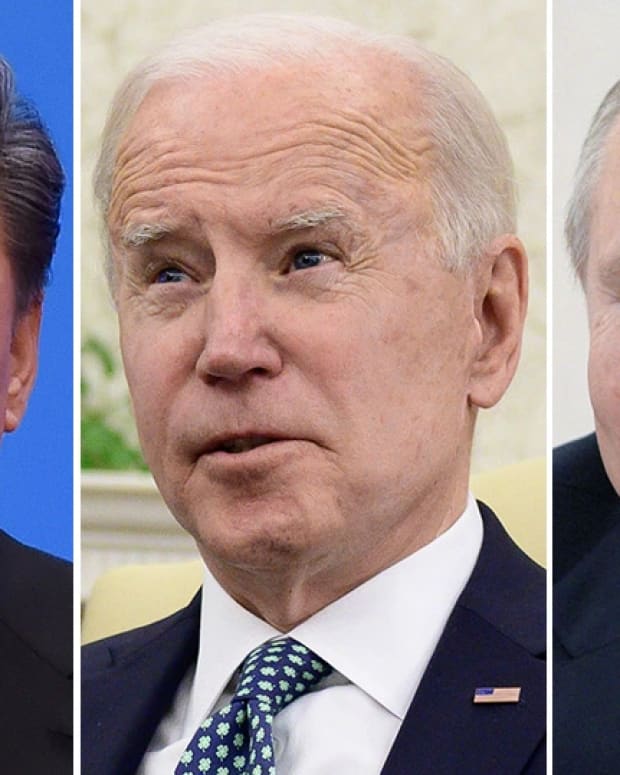
GLOBAL SECURITY NEWS
A New Strategic Deterrent Paradigm
BY PETER HUESSY - WARRIOR SENIOR NUCLEAR WEAPONS ANALYST, SENIOR FELLOW - WARRIOR MAVEN, ATLANTIC COUNCIL, HUDSON INSTITUTE21 HOURS AGO

U.S. ARMY | MARINES NEWS
What comes After the Abrams? Assistant Secretary of Army Acquisition, Logistics and Technology Talks Future of Tanks
BY KRIS OSBORN, WARRIOR MAVEN - CENTER FOR MILITARY MODERNIZATION22 HOURS AGO

U.S. NAVY NEWS
Are Aircraft Carriers Obsolete Due to Anti-Ship Missiles? Here's What The Navy Says
BY KRIS OSBORN, WARRIOR MAVEN - CENTER FOR MILITARY MODERNIZATION22 HOURS AGO

U.S. ARMY | MARINES NEWS
Operation Iraqi Freedom - 20 Years Later -- Warrior Invited on Center for New American Security
BY KRIS OSBORN, WARRIOR MAVEN - CENTER FOR MILITARY MODERNIZATION22 HOURS AGO
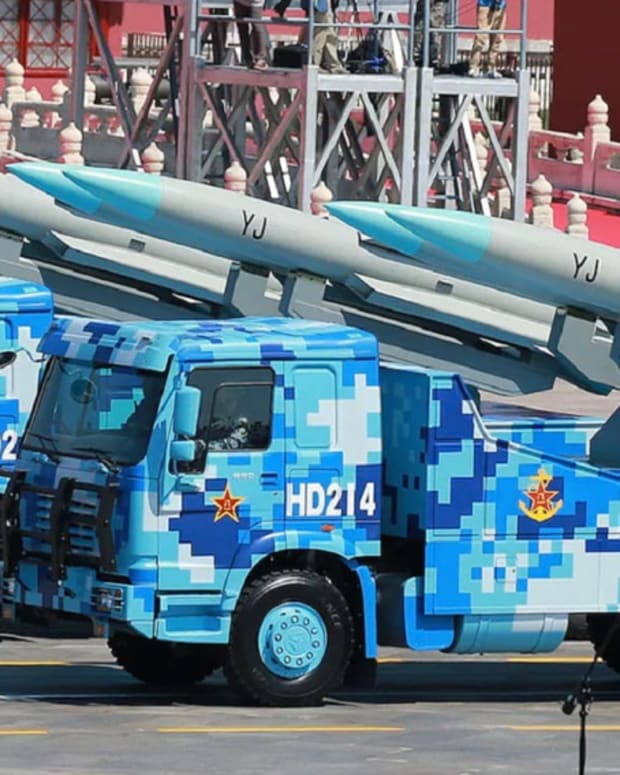
CHINA WATCH
Analysis of Chinese Cruise Missiles .. How Dangerous is their arsenal
BY CHRISTIAN ORR, FORMER AIR FORCE SECURITY SERVICES OFFICER22 HOURS AGO
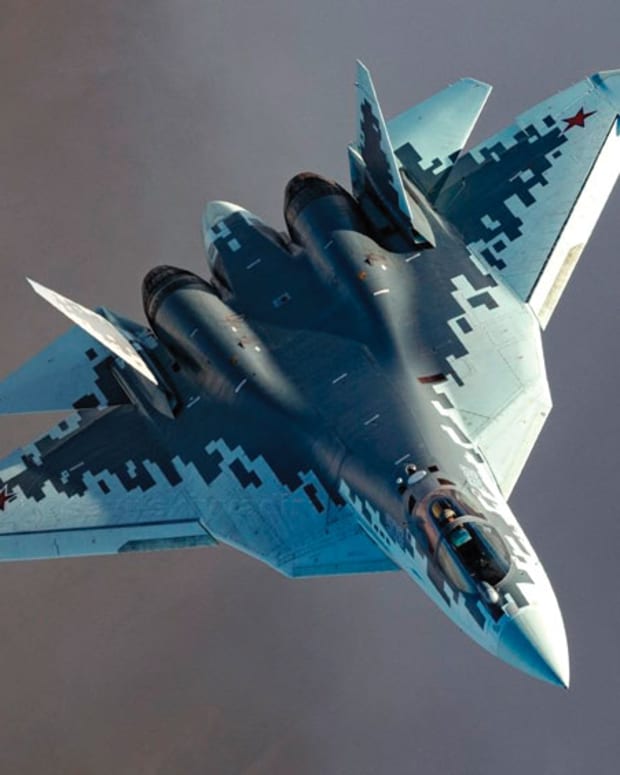
RUSSIA UKRAINE
Would Russia Really Send Its Su-57 Stealth Fighters To Die In Ukraine?
BY HARRISON KASS, FORMER AIR FORCE OFFICER22 HOURS AGO

GLOBAL SECURITY NEWS
How is Iran Flying Upgraded F-14 Tomcats?
BY MAYA CARLINJUN 4, 2023

RUSSIA UKRAINE
British Challenger 2 Tank is Decimating Russian Armored Vehicles
BY CHRISTIAN ORR, FORMER AIR FORCE SECURITY SERVICES OFFICERJUN 4, 2023

U.S. AIR FORCE NEWS
How Effective is the Upgraed F/A-18 Super Hornet? Best 4th-gen in the world
BY MAYA CARLINJUN 4, 2023
SEE MORE

© 2023





